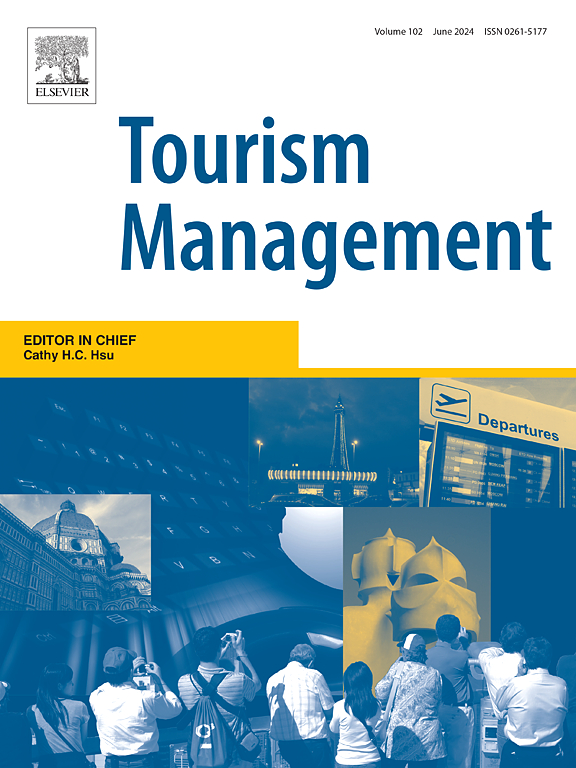韩国城市中亚洲、欧洲和北美游客城市内旅游活动的空间集中度和群体间差异
IF 10.9
1区 管理学
Q1 ENVIRONMENTAL STUDIES
引用次数: 0
摘要
随着人们对过度旅游及其相关影响的担忧与日俱增,了解旅游目的地内游客活动的空间集中度仍是当务之急。本研究表明,利用手机数据可以准确量化空间集中效应以及不同社会背景游客之间的潜在异质性。我们介绍了一个分析框架,并通过对韩国三个城市(首尔、釜山和济州)的国际旅行者进行案例研究证明了该框架的有效性。结果表明,亚洲游客的空间集中度最高,其次是欧洲和北美游客,这一结论在所有三个城市和一天中的不同时段都是一致的。Theil's entropy 指数有效地描述了三个群体活动的空间相似性,揭示出欧洲游客的空间偏好介于亚洲人和北美人之间。这些发现强调了在游客流量管理中考虑游客社会背景的重要性。本文章由计算机程序翻译,如有差异,请以英文原文为准。
Spatial concentration of intra-urban tourist activities and inter-group differences between Asian, European and North American travelers in Korean cities
With increasing concerns about overtourism and its associated impacts, there remains an imperative need to understand the spatial concentration of tourist activities within destinations. This study demonstrates that mobile phone data can be leveraged to accurately quantify the spatial concentration effect and potential heterogeneity among travelers with different social backgrounds. We introduce an analytical framework and demonstrate its efficacy through a case study of international travelers in three Korean cities (Seoul, Busan and Jeju). Results show that Asian travelers exhibit the highest spatial concentration, followed by European and North Americans, a finding that is consistent across all three cities and different times of the day. The Theil’s entropy index effectively portrays spatial similarity of activities among the three groups, revealing that the spatial preferences of European travelers are intermediate between those of Asians and North Americans. The findings underscore the importance of considering travelers’ social backgrounds in tourist flow management.
求助全文
通过发布文献求助,成功后即可免费获取论文全文。
去求助
来源期刊

Tourism Management
Multiple-
CiteScore
24.10
自引率
7.90%
发文量
190
审稿时长
45 days
期刊介绍:
Tourism Management, the preeminent scholarly journal, concentrates on the comprehensive management aspects, encompassing planning and policy, within the realm of travel and tourism. Adopting an interdisciplinary perspective, the journal delves into international, national, and regional tourism, addressing various management challenges. Its content mirrors this integrative approach, featuring primary research articles, progress in tourism research, case studies, research notes, discussions on current issues, and book reviews. Emphasizing scholarly rigor, all published papers are expected to contribute to theoretical and/or methodological advancements while offering specific insights relevant to tourism management and policy.
 求助内容:
求助内容: 应助结果提醒方式:
应助结果提醒方式:


